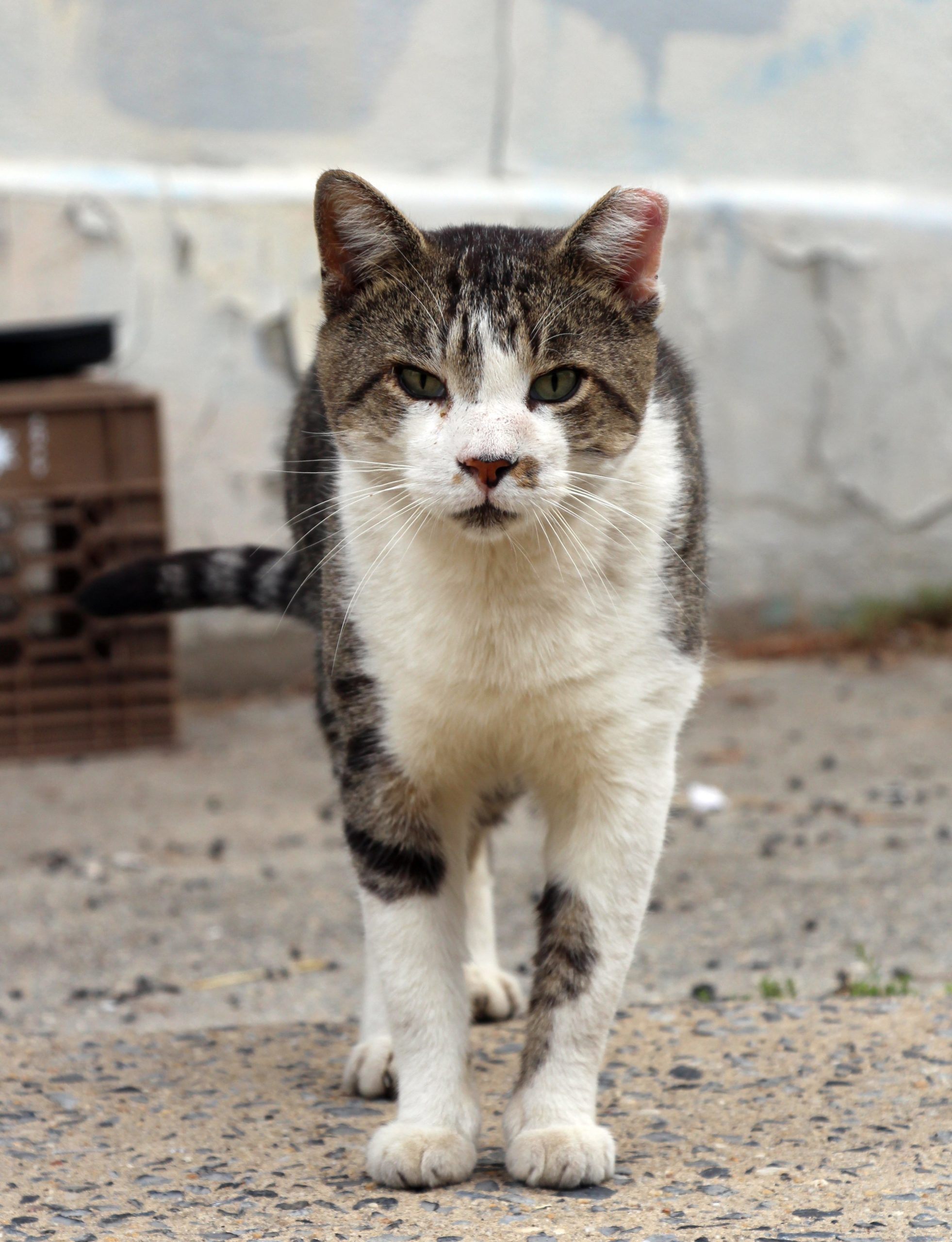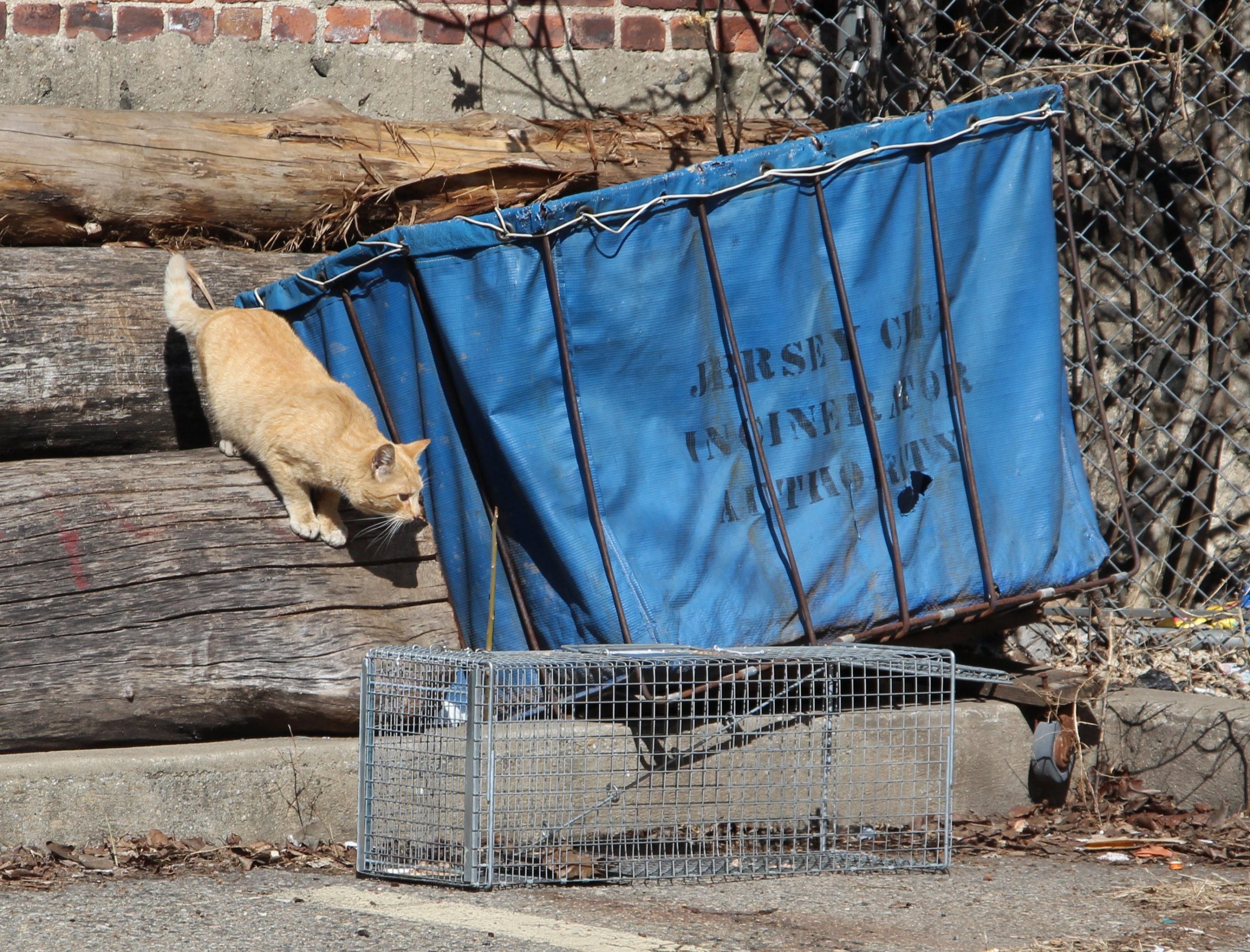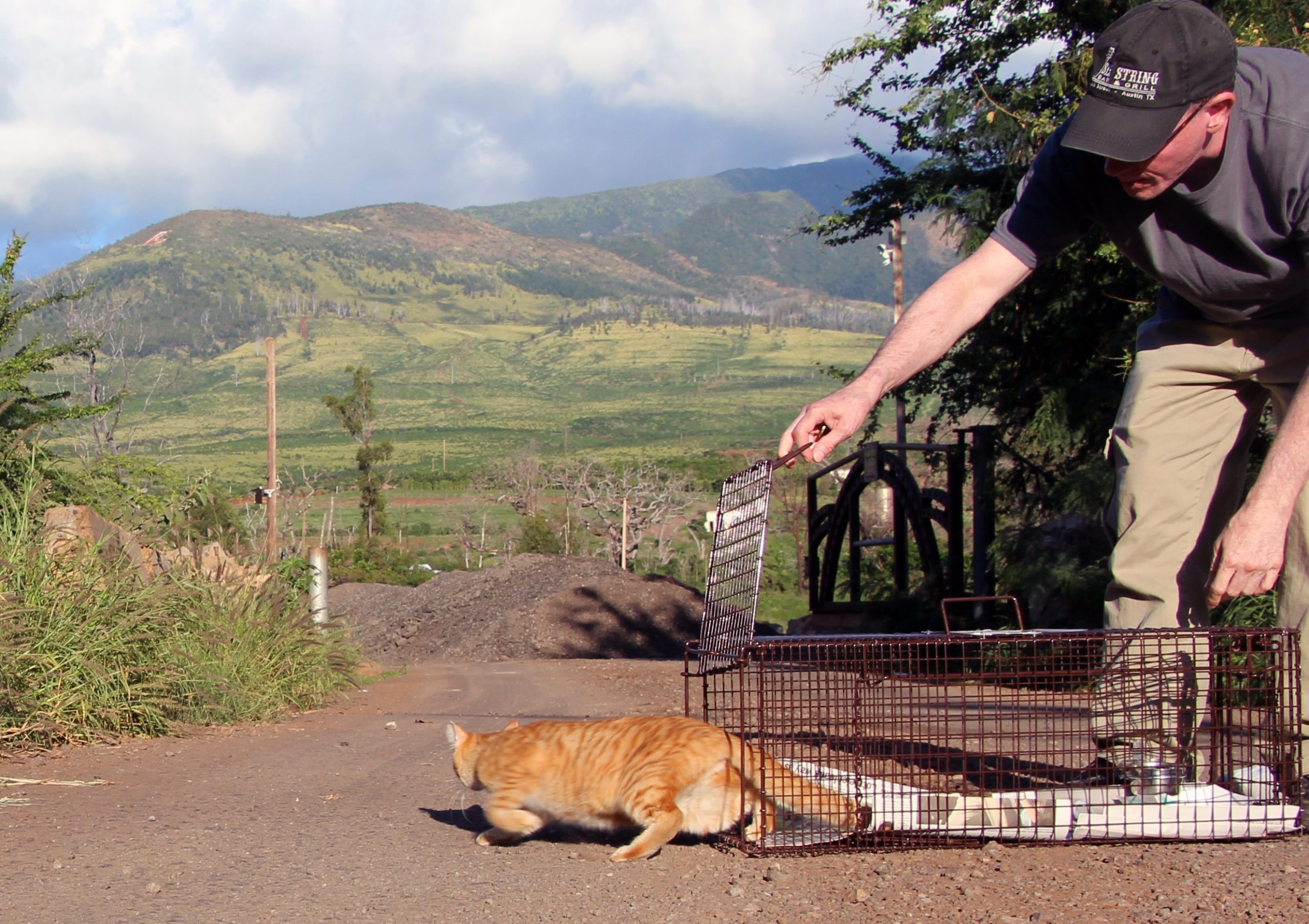Photo courtesy of Neigborhood Cats

Trap Neuter Return (TNR) is a non-lethal method of controlling community cat populations that has been practiced in the United States since the early 1990s. Using this technique, all the feral (wild) cats in a colony (group) are humanely trapped, spayed or neutered, vaccinated for rabies, treated for any injuries, ear tipped for identification and then returned to their home territory where they are fed, sheltered and monitored by a caregiver. Whenever possible, kittens and friendly adults are removed from the colony and offered for adoption.
Because TNR is becoming increasingly popular, there are now more resources and support for community members who want to get involved. People who pursue TNR have an opportunity to make a real difference in reducing the number of homeless cats, while improving the quality of life for the cats and the communities they are a part of. Here’s how you can get involved.
Community relations
Educating yourself on the multi-layered process of TNR is a critical starting point. There are many local and national resources, but two pioneers of the movement are Neighborhood Cats and Alley Cat Allies (see sidebar below). These organizations offer keen insight into the world of TNR with a plethora of resources to guide you through the process from planning and materials to placing a sterilized cat back into its colony.
One key part of carrying out TNR is to establish a friendly dialogue with neighborhood residents and address any possible concerns. This communication will hopefully create a level of trust that will help facilitate the project, as well as educate the neighborhood about the issue and how it can be humanely resolved.
When interacting with people in the community, it’s best to be prepared for possible encounters with people who have hostile feelings towards the cats, and arm yourself with printed materials that can better explain TNR and how we can live harmoniously with community cats. Many TNR organizations offer educational materials that can be mailed or downloaded for printing.
Meredith Weiss is the TNR Director at Neighborhood Cats, which offers workshops and online resources to help people understand and move forward on the process of TNR. Regarding community relations, Meredith feels that “it’s a step that should not be skipped, though I’m afraid some people do. Responsible caretakers should assume somewhat of an ambassador role in enlightening the community about TNR and feral cats.”
Meredith encourages caregivers to speak with neighbors or anyone in close proximity to the cats because “You’re likely to learn a wealth of information that will benefit your trapping efforts, such as knowledge of other people feeding, the number of cats or the whereabouts of kittens.” Even better, this outreach frequently leads to a new ally who may want to help with the endeavor.
Photo courtesy of Neigborhood Cats

Planning ahead
Preparedness is everything, especially when it comes to a complicated project such as TNR. Planning includes gathering information about the circumstances of a situation and putting together the proper resources.
You may want to find a likeminded partner. Ann Lagoy of Stray H.E.L.P. in Fishkill, NY feels that having a partner or mentor to share the duties helps keep people in the game longer. Having access to that hands-on experience and seasoned perspective can be invaluable — especially to a novice rescuer.
Finding a holding space for the cats to recover is paramount to the process. You need to designate a safe, contained, temperature-controlled location where you will be able to hold the cats before and after surgery while they recover. Cats determined to be feral and set for release back to their colony should recover in traps. Friendly cats or kittens who are candidates for adoption can recover in an appropriate space (cage, room, foster home, etc.).
The recommended post-surgery recovery time varies between 24 to 48 hours for males, and 48 to 72 hours for females. Nursing mothers can be released after 24 to 36 hours if necessary (and if they are alert). Cats who are sick, injured or experienced a more involved procedure — like a late-term abortion — will likely need a longer recovery time. Be mindful of inappetence after two or three days (after being offered a variety of foods including Fancy Feast) because that is atypical and will likely warrant additional veterinary attention. Recovery time can vary based on status of the cats and weather.
Once you’ve lined up a holding space, you are then ready to make a s/n (spay/neuter) appointment. Many communities have mobile cat clinics that offer low cost sterilization, testing (FIV/FeLV) and vaccine services to feral and pet cats. Local animal welfare organizations and shelters often provide the same service. Some standard vets can be used as an alternative to a clinic, but it’s very important to make certain that they handle feral cats and to get cost estimates for all charges beforehand.
It’s ideal to work with clinics who are dedicated to homeless cats because they understand the nuances of their needs. At the clinics, the usual veterinary treatment is neuter, ear tip and rabies. Before dropping cats off, create an identification labeling system to include on each trap. Other information can include services wanted and simple note(s) on temperament (fiery, cooperative, etc.). When picking up cats from the s/n venue, be sure to look over the cats to verify they are yours and check the traps to be certain they are secure before transport. Meredith Weiss of Neighborhood Cats cautions, “if any cat appears still unconscious from anesthesia, you should ask to speak to the vet. Most clinics will want the cats to be awake before they leave, even if they’re still in the wobbly stage.”
Supplies and equipment
One of the essential pieces of equipment you will need is a humane trap. Traps are expensive, so it’s perfectly fine to borrow from a local trap bank through your local shelter or rescue organization. The trap should have a removable door and be at least 36 inches in length. The cats may stay in the traps for up to seven days, so you will want them to be as comfortable as possible. Pros prefer and suggest traps made by Tomahawk, Safeguard or Tru Catch.
Be sure to have more traps than number of cats you are targeting based on the rule of one cat per cat. (Often, there are more cats than you accounted for during the reconnaissance stage.)
Keep in mind that you will be more successful if you trap as many cats as possible in the first trapping session because the animals usually get hip to what you are doing the more you do it. The trap bank or rescuer you borrow from should be able to offer a demo on operating the trap. Otherwise, there are “how” to videos online that can be referenced.
Dividers in traps are important
To safely care for the cats in traps, you should use dividers. A divider is an accessory that allows you to clean the trap and feed the cats without risking their escape, and it keeps you both at a safe distance from one another. To care for cats in traps without a divider (or two) is risky business. Most trap banks don’t have dividers for loan, so those would need to be purchased if a loan resource isn’t possible. The best dividers are made by Tru Catch (www.trucatchtraps.com), and instructional videos of how to use them are also available online.
To entice the cats into the traps, you will need bait. Cats can be particular, so it’s best to have a range of options (don’t skimp!), but the best include canned tuna, unflavored sardines, canned mackerel or pieces of rotisserie chicken. “Occasionally, some cats may enter the trap with only their regular cat food as bait, but don’t count on it,” stresses Meredith Weiss of Neighborhood Cats. Bait can be placed directly on the trap, or in a lid or small container. It’s critical to not put too much bait at the front of the trap. Instead, focus the bait in the back with a few tiny bits leading to it with a drizzle of sardine or tuna oil.
Cats must be hungry to enter the traps, so food needs to be withheld for 24 hours prior to your first day of trapping. This needs to be communicated to anyone else in the neighborhood who might be feeding them. Also, it’s a good idea to put together a brief trapping notice several days prior to trapping that includes dates of trapping. This clear communication will give neighbors a heads up on what’s going on if they allow their own cats to go outside.
Other project supplies you will need include newspaper to line the bottom of each trap. A large towel or other fabric for each trap should be on hand, large enough to cover the entire trap on all sides. After a cat has been trapped, cover the trap to calm the cat and lessen the risk of injury. The cover should remain on the trap for the duration of the cat’s stay in the holding space.
Spoons for the bait and a can opener are helpful in your trapping kit, as are tools like pliers, a pocket knife, and some WD-40 for traps that might not work properly. Always check traps prior to arriving at trapping site to make sure they are functional. Additional supplies such as hand sanitizer, a jug of water and gloves are important. Lastly, a plastic tarp or plastic tablecloth can help keep the transport vehicle clean.
Time to trap!
Trapping should begin two days before your spay/neuter appointment because you want to minimize the amount of time the cats are in traps. It’s helpful to place all the traps out into the territory at once. One trick to help naturally guide a cat into the trap is to have the back end of the trap placed against something, which will force their focus on the front end of the trap.
Cats usually inspect around the trap, trying to figure out how to get at the bait. Once the traps are placed and set, get yourself out of sight and keep a low profile, but do not leave the traps unattended. Ideally, you will position yourself in a place where all the traps are in clear site, but that is not always possible. Instead, you may have to move around to check the traps, but don’t disturb the site too often as you will spook the cats away.
The presence of the trap alone will have them both curious and on guard. Trapping is a ‘waiting and watching’ game. Sometimes it’s a fast process, and other times it’s a long one. You can usually hear the sound of the trap door closing by the trip plate being triggered, though some traps are quieter than others. When you realize the cat has been humanely trapped, immediately go to the trap, cover it, remove the cat from the site and label the trap. As you are trapping, you may find that there are hot spots — areas the cats naturally gravitate to. In this scenario, you can place a new trap where an old one worked.

Photo courtesy of Neigborhood Cats
Recovery and release
The night before your appointment, you will want to withhold food and water by midnight, though it’s okay to give kittens one tablespoon of wet food if a vet agrees. Kittens can be safely sterilized as early as six to 14 weeks of age (or when two pounds). Many rescuers and some clinics prefer the kittens to be 12 weeks old. Be sure to bring the cats in on time. Clinics are often hectic, so it’s helpful if you are organized and prompt.
There are stages to anesthesia recovery to be aware of, and it’s important to monitor your recovering cats. Part of the paperwork you will take away with you from the clinic outlines what to watch for and will list an emergency number to call should that be needed.
As previously explained, cats remain in the traps from the time they are trapped until they are released. Keep them covered, their traps clean, and try not to disturb them too much because interaction with humans is very stressful for cats who are not socialized.
When you are ready to release the cats, it’s important to return them to the same location where they were trapped. Ideally, release at dawn or dusk, when feral cats are most comfortable moving around. Don’t release during rain, snow or bitter cold.
Avoid relocating the cats
Relocation is a very complicated process and not advised unless there are extreme, life-threatening circumstances. For relocation guidelines, you can visit the Neighborhood Cats and/or Alley Cat Allies web sites. Doing a relocation without fully understanding the steps can endanger the cats’ lives.
Before scooping up kittens, consider their age. The ideal age to rescue kittens for socialization is five to eight weeks old. Kittens over three months may be much harder to socialize. Resist the temptation to take in kittens who will need bottle-feeding, unless you know for certain that the mom has abandoned them or is deceased. It’s ideal to trap both the mother and kittens. If you have to rescue them separately, then it’s most critical to trap and spay the mother in order to prevent future litters down the road. — Nicole Ganas




